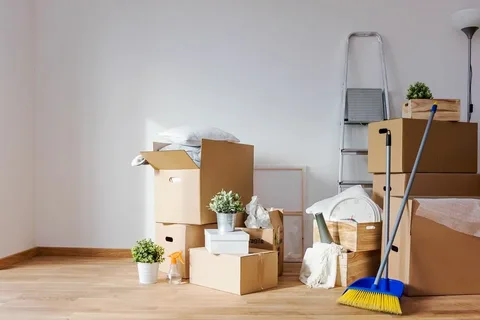How Do Experts Determine the Extent of Water Damage?

Water damage can devastate homes and businesses, disrupting lives and causing costly repairs. From burst pipes to natural floods, the resulting destruction often goes beyond what the eye can see. So, how do experts determine the extent of water damage? This is where their technical know-how and specialized equipment play a crucial role.
When dealing with residential or commercial water damage in areas like Winnipeg and Oakville, professional services like Ideal Response step in to provide thorough evaluations. A clear understanding of the damage is essential for effective water mitigation Winnipeg and water mitigation Oakville services.
What Is Involved in Assessing Water Damage?
Determining the extent of water damage is a multi-step process. It’s not just about checking visible wet spots. Water can travel under floors, inside walls, and seep into insulation and structural supports. Here’s how the experts go about identifying the full scope of the issue:
Visual Inspection Is the First Line of Defense
Professionals begin with a comprehensive visual inspection. During this phase, they:
- Check for water stains on ceilings, walls, and floors.
- Look for peeling paint, warped wood, or bubbling drywall.
- Inspect all areas near water sources—kitchens, bathrooms, basements, and laundry rooms.
Although visual signs are limited in identifying hidden damage, they give clues to where deeper issues may lie. This is especially important in water mitigation Oakville, where older homes may hide vulnerabilities behind surfaces.
Moisture Meters Reveal Hidden Water
After visual inspection, moisture detection tools are used to dig deeper. These devices include:
- Non-invasive moisture meters that use radio frequency or electromagnetic signals.
- Pin-type meters that measure conductivity between two pins inserted into materials.
By checking moisture levels in walls, floors, and ceilings, experts can locate moisture pockets that aren’t visible. This is essential in climates like Winnipeg, where prolonged dampness can lead to mold and structural decay.
Infrared Cameras Detect Temperature Differences
Thermal imaging technology allows professionals to detect water presence by identifying temperature variations. Wet materials tend to be cooler than dry areas, making them easy to spot with infrared cameras.
For water mitigation Winnipeg, where the freeze-thaw cycle can lead to hidden leaks, this technology provides a clear advantage. It helps experts trace water’s path and understand how far the damage has spread.
Hygrometers Measure Humidity Levels
When the air in a room feels unusually humid, it could be a sign of trapped moisture. Hygrometers measure the relative humidity in indoor environments, helping professionals assess the severity of the water exposure.
Elevated humidity can contribute to mold growth within 24 to 48 hours. By evaluating air moisture content, specialists can decide whether dehumidification is necessary as part of the mitigation strategy.
Invasive Testing Confirms Structural Integrity
Sometimes, experts must take more invasive measures to determine the extent of water damage. This may involve:
- Removing baseboards or drywall.
- Drilling small holes to probe behind walls.
- Cutting out saturated insulation or flooring.
Though this might sound extreme, it’s often necessary for complete water mitigation Oakville services. Professionals ensure that all water-logged materials are identified and removed before reconstruction begins.
Categorizing the Type of Water Exposure
Not all water damage is the same. Professionals classify water damage into categories based on contamination levels:
- Category 1 (Clean Water): From sources like broken pipes or appliance malfunctions.
- Category 2 (Gray Water): Includes soapy water from dishwashers or washing machines.
- Category 3 (Black Water): Highly contaminated water from sewage or natural flooding.
Understanding the water category helps experts decide how to treat affected materials and determine whether certain items must be discarded.
In Winnipeg and Oakville, storms and snowmelt can introduce gray or black water into properties, necessitating extra care during water mitigation Winnipeg procedures.
Measuring the Extent of Material Saturation
Experts assess how deeply water has penetrated various building materials. For example:
- Drywall may absorb water up to several feet above the water line.
- Wood framing can hold moisture for extended periods and warp over time.
- Concrete floors may appear dry but contain moisture that takes weeks to evaporate.
Understanding the saturation level ensures that all damp materials are dried or replaced, preventing mold outbreaks and further structural issues.
Monitoring the Drying Process Over Time
Assessment doesn’t stop after the first visit. Once drying begins, professionals return regularly to monitor progress. Using moisture meters and hygrometers, they ensure that all affected areas reach safe dryness levels.
For top-tier water mitigation Winnipeg, companies like Ideal Response maintain meticulous records of drying data to verify successful mitigation. This process helps support insurance claims and provides homeowners with peace of mind.
Mapping the Spread of Damage with Software
Advanced restoration companies now use mapping software to document water damage. This includes:
- Floorplan schematics showing affected areas.
- Moisture readings linked to specific rooms and materials.
- Progress reports shared with property owners and insurers.
For large-scale water mitigation Oakville projects, this data-driven approach keeps everything organized and ensures no detail is overlooked.
Determining What Can Be Salvaged
Once the full extent of the damage is clear, restoration professionals assess which materials can be saved and which need replacing. This decision is based on:
- Type of water involved (clean vs contaminated).
- Porosity of the material.
- Duration of water exposure.
Carpets, drywall, and insulation often need removal, while hardwood and tile may be salvageable with proper drying.
Partnering with Restoration Experts Like Ideal Response
A trusted name in water damage assessment and recovery, Ideal Response brings years of experience to water mitigation Oakville and water mitigation Winnipeg. Their team uses a mix of advanced technology, industry standards, and human expertise to ensure that all damage is accurately evaluated.
By choosing professional help, homeowners can avoid costly mistakes like assuming everything is dry when hidden water still lingers.
Conclusion: Why Expert Assessment Matters
Determining the full extent of water damage is not a guessing game. It requires a systematic approach, specialized tools, and deep industry knowledge. Experts perform detailed inspections, use high-tech devices, and apply proven standards to ensure nothing is missed.
For effective water mitigation Winnipeg and water mitigation Oakville, trust companies like Ideal Response who not only detect visible damage but also uncover the hidden dangers that can lead to long-term problems. Prompt, thorough assessment is the key to a safe and successful recovery after water intrusion.



